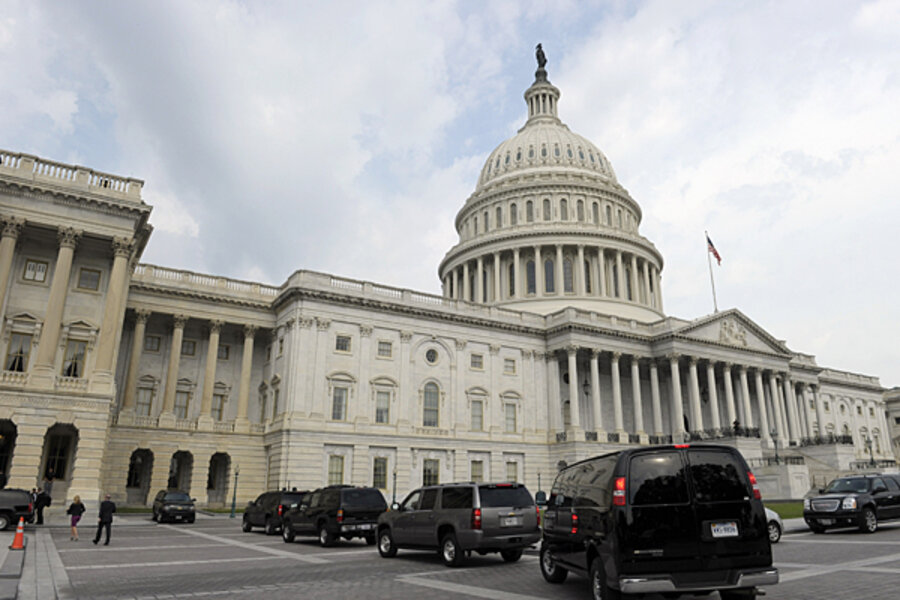Why is America so angry?
Loading...
Why is the nation more bitterly divided today than it’s been in eighty years? Why is there more anger, vituperation, and political polarization now than even during Joe McCarthy’s anti-communist witch hunts of the 1950s, the tempestuous struggle for civil rights in the 1960s, the divisive Vietnam war, or the Watergate scandal?
If anything, you’d think this would be an era of relative calm. The Soviet Union has disappeared and the Cold War is over. The Civil Rights struggle continues, but at least we now have a black middle class and even a black President. While the wars in Iraq and Afghanistan have been controversial, the all-volunteer army means young Americans aren’t being dragged off to war against their will. And although politicians continue to generate scandals, the transgressions don’t threaten the integrity of our government as did Watergate.
And yet, by almost every measure, Americans are angrier today. They’re more contemptuous of almost every major institution — government, business, the media. They’re more convinced the nation is on the wrong track. And they are far more polarized.
Political scientists say the gap between the median Republican voter and the median Democrat is wider today on a whole host of issues than it’s been since the 1920s.
Undoubedly, social media play a part — allowing people to pop off without bearing much responsibility for what they say. And most of us can cocoon within virtual or real communities whose members confirm all our biases and assumptions.
Meanwhile, cable news and yell radio compete for viewers and listeners by being ever more strident. Not long ago I debated a Republican economic advisor on a cable TV program. During the brief station-break, the show’s producer told me to “be angrier.” I told her I didn’t want to be angrier. “You have to,” she said. “Viewers are surfing through hundreds of channels and will stop for a gladiator contest.”
Within this cacophony, we’ve lost trusted arbiters of truth — the Edward Murrows and Walter Cronkites who could explain what was happening in ways most Americans found convincing.
We’ve also lost most living memory of an era in which we were all in it together — the Great Depression and World War II — when we succeeded or failed together. In those years we were palpably dependent on one another, and understood how much we owed each other as members of the same society.
But I think the deeper explanation for what has happened has economic roots. From the end of World War II through the late 1970s, the economy doubled in size — as did almost everyone’s income. Almost all Americans grew together. In fact, those in the bottom fifth of the income ladder saw their incomes more than double. Americans experienced upward mobility on a grand scale.
Yet for the last three and a half decades, the middle class has been losing ground. The median wage of male workers is now lower than it was in 1980, adjusted for inflation.
In addition, all the mechanisms we’ve used over the last three decades to minimize the effects of this descent — young mothers streaming into paid work in the late 1970s and 1980s, everyone working longer hours in the 1990s, and then borrowing against the rising values of our homes — are now exhausted. And wages are still dropping — the median is now 4 percent below what it was at the start of the so-called recovery.
Meanwhile, income, wealth, and power have become more concentrated at the top than they’ve been in ninety years.
As a result, many have come to believe that the deck is stacked against them. Importantly, both the Tea Party and the Occupier movements began with the bailouts of Wall Street — when both groups concluded that big government and big finance had plotted against the rest of us. The former blamed government; the latter blamed Wall Street.
Political scientists have also discovered a high correlation between inequality and political divisiveness.
The last time America was this bitterly divided was in the 1920s, which was the last time income, wealth, and power were this concentrated.
When average people feel the game is rigged, they get angry. And that anger can easily find its way into deep resentments — of the poor, of blacks, of immigrants, of unions, of the well-educated, of government.
This shouldn’t be surprising. Demagogues throughout history have used anger to target scapegoats — thereby dividing and conquering, and distracting people from the real sources of their frustrations.
Make no mistake: The savage inequality America is experiencing today is deeply dangerous.








